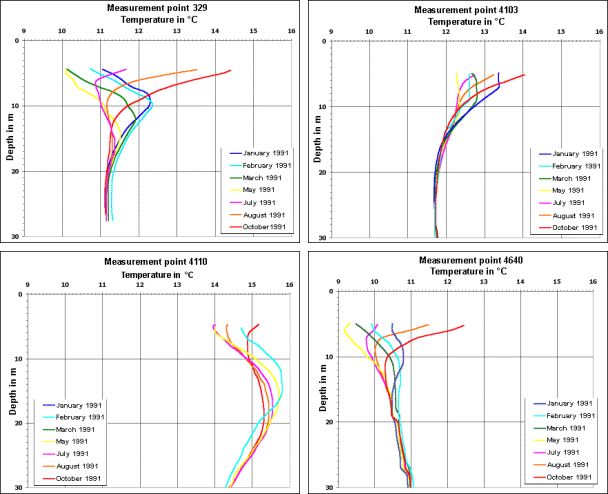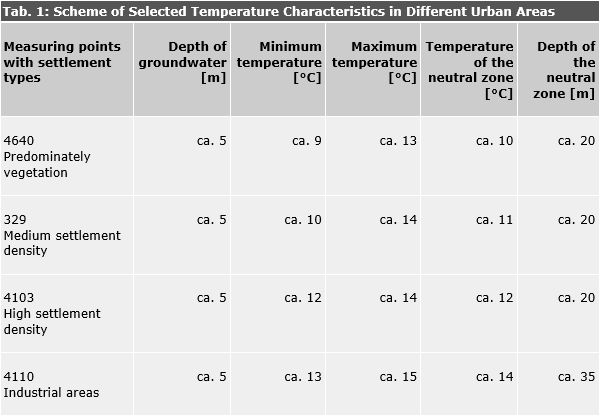This map presents the groundwater temperature distribution in the city area of Berlin with the reference horizon at sea level. The corresponding dependence of the position in the glacial valleys or the plateaus is 30 – 60 m (cf. fig. 3). In this depth there are no daily and yearly influence of temperature fluctuation.
The distance between the individual isolines is 0,5°C. The groundwater temperature fluctuates between 8,0°C in the outskirts of the city and 13,5°C in industrial areas. It has been generally observed that the groundwater temperature rises from the outskirts to the city center. The temperature dispersion in the northeast shows a continual rise to the city center, while the remaining city areas have more distinct positive and negative temperature anomalies.
The heavily built on and sealed city center is surrounded by the 11,5°C isoline. Inside this area are (known from local investigations) points that exceed 12°C. The highest measured temperatures are near the cooling water discharge of the heat power station. Outside of the city center there is a correlation between high temperature and high soil sealing (cf. map 01.02, SenStadUm, 1993a) for example near the center and industrial areas.
The observed temperature anomalies in the southwest of the city is also striking. They may be a result of the closed down Wannsee landfill that produces heat through decomposition.
Below the extended forest-areas in the outskirts-area of southeast, west and northwest, the temperatures are < 10 °C. Furthermore, negative temperature-anomalies of under 10 °C exist within this area, characterized by a high degree of vegetation. So, two large green areas are noticeable to the south of the city center.
Densely settled areas have a groundwater temperature that is more than 2°C higher than areas free from settlement.
Among other things, the near surface groundwater-temperature-distribution in the city area shows a connection with the distribution of industry-settlements, waste heat production, surface sealing, free areas and the entry of heated surface water through influent situations. Under consideration of the groundwater flow field, one can assume that these factors have an essential influence on the change of the groundwater temperature (Blobelt, 1999). Since an accumulation of these factors occurs normally in the city, the factors of influence mutually overlap.
Altogether the results of the temperature measurements show that the groundwater has clearly warmed in the city of Berlin especially in the central area. The long-term cause of this is the onward urbanization, with its profound heating of the near surface ground and consequently of the groundwater.


